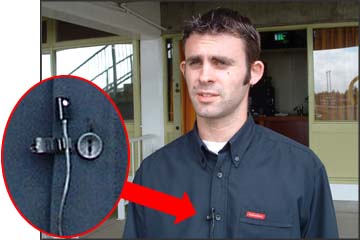AudioPostExpert what do you mean thast shotgun mics sound more realistic? Shouldn't be the opposite because lav are closer to the mouth?Or maybe is vice versa?
Lavs are closer to the mouth but there's something else they're far closer to, the human body's biggest resonating chamber, the chest! Place your ear almost touching someone's chest, put your finger in your other ear and get them to speak. How "realistic" does that sound?
In addition, unless you live in an anechoic chamber, the sound that originates from someone's mouth is not the sound that you hear. What you actually hear is a mashed-up mixture of the original sound plus numerous reflections (of that sound) from all the surfaces in the room/environment. A boom mounted mic will pick-up some of that mixture, a lav much less so. This is what Alcove and H44 are referring to. In narrative film, we are essentially storytellers, we want our audience to feel involved our story and to do that it needs to sound/feel realistic. In doco making, we are still storytellers but we are telling a story about an event/story, so most of the time realism is not necessary.
As I said before I need something as versatile as possible, I might stretch my budget and get an expensive (given my budget) mic, but I can't really get more than one to use in the future or maybe on the same project or my budget would be used just for audio!
Think about mics like you do about cars. Cars are designed for different tasks and often, the design requirements to fulfil those tasks are mutually exclusive. For example, an off-road car has completely different and mutually exclusive design requirements to say a Formula 1 racing car. There can be no versatile car which is good at both because to add the features required of an F1 car one has to loose the features which makes it a good off-road car and vice versa. A car which is half way between an off-road car and an F1 car would not be a moderately good off-road car and a moderately good F1 car, it would be both a terrible off-road car and a terrible F1 car. The same is broadly true of mics. In other words, as a general rule, the more versatile the mic, the more crap it is at everything! Professional Production Sound Mixers (PSMs) do not have one super expensive mic which does it all, they have a collection (a garage which contains off-road cars, F1 cars, family cars, pick-up trucks, etc. And, they are/should be experts at driving all of them!). Hence Alcove's original advice: "
As always, my primary advice is to find someone to handle the audio for you. My secondary advice is to RENT what you need; at least you'll get decent quality."
Furthermore I would rather buy a solid model that would last me some years, thus my questions, I prefer quality over quantity and we all know that quality costs.
Lavs are small, they have small electronics and small wires, so they are all relatively delicate compared to other types of mic. With that caveat in place, some lavs are less delicate than others. The Sanken Cos-11 is one of the most robust and should provide many years of service (if handled with the respect a relatively delicate piece of electronics deserves). It's also specifically designed for use on the chest to record dialogue. With care, it can even be positioned under a layer of clothing and still produce good results (due to it's frequency response). However, this design (frequency response) means that it's not a good choice for other applications. The DPA 4061 is probably the best all-round sounding lav I've heard, it even does a great job as a musical instrument mic for example but that flexibility comes at a price: Firstly, it's closer to $600, secondly it's less robust than a cos-11, thirdly it produces a little more self noise and lastly, for the specific task of recording dialogue while attached to the talent's chest, it's not quite as flexible IMHO as a cos-11 (not so good under clothing for example). The B3 I suggested isn't as robust as a cos-11 and doesn't sound as good as either a cos-11 or a 4061 but it is a solid little performer; it's reasonably robust (for a lav) and capable of professional sounding results for less than half the price of a cos-11 and less than a third of the price of a 4061. So, you pays yer money and takes yer choice.
One pitfall to avoid with all these pro lavs in your situation; they are most commonly bought for use with a wireless system, so make sure you are are buying the XLR version and not the wireless version! One last pitfall with any lav, beware the type of clothing the talent is wearing. Some materials, nylon based ones being a good example, are likely to preclude you from getting usable dialogue no matter what lav you use. As with all mics, it's as much about the skill of the person operating it as it is about the mic itself. Even if you buy one of the top lavs, you'll still need to practice, experiment and build experience to get the best out of it.
G




